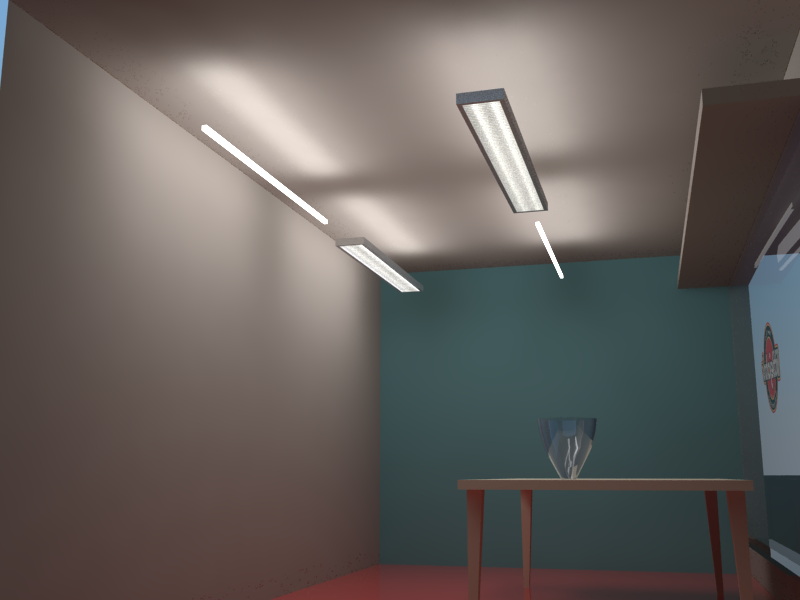Exact effect of a 40 watt fluorescent light
-
I played around with simple rectangular lights, here are some results. You can see the light pattern is different depending on how many facets you make with the rectangular lights. It ends up with a bit of a hotspot on the ceiling using 5 planes, I actually think the 3 planes turned out better. The thing I made different from what valerostudio showed above is that I made the rectangular lights much larger than the bulb in order to get a softer more spread out effect. I have the lights set as hidden in vray.


-
Andybot, nice work. The thing that we need to disclaim here is that nothing we are showing you is the "exact" effect of a 40w bulb. I am fairly certain this cannot be done in Vray, unless I am wrong. You can give an light a Watts setting, but I dont think this is directly related to how a real bulb works. Someone correct me if I am wrong here.
-
@valerostudio said:
Andybot, nice work. The thing that we need to disclaim here is that nothing we are showing you is the "exact" effect of a 40w bulb. I am fairly certain this cannot be done in Vray, unless I am wrong. You can give an light a Watts setting, but I dont think this is directly related to how a real bulb works. Someone correct me if I am wrong here.
Thanks!
Correct, this is all approximate and relative. With IES files, there is actually a relationship to real values, but even then, the render engine uses an approximation (biased) -
There is not a tool for that in Light Up ?
-
I have no experience with Light-Up but I think only an unbiased rendering engine will give you "real" world results.
-
if its using wattage then biased render cant replicate that.
-
andy that is cool tests.
-
what is biased rendering and unbiased rendering??..and andybot. awesome effect.

-
I think this article has the basic answers to this question.
http://galaxycityradio.com/2012/01/04/biased-vs-unbiased/
Advertisement







